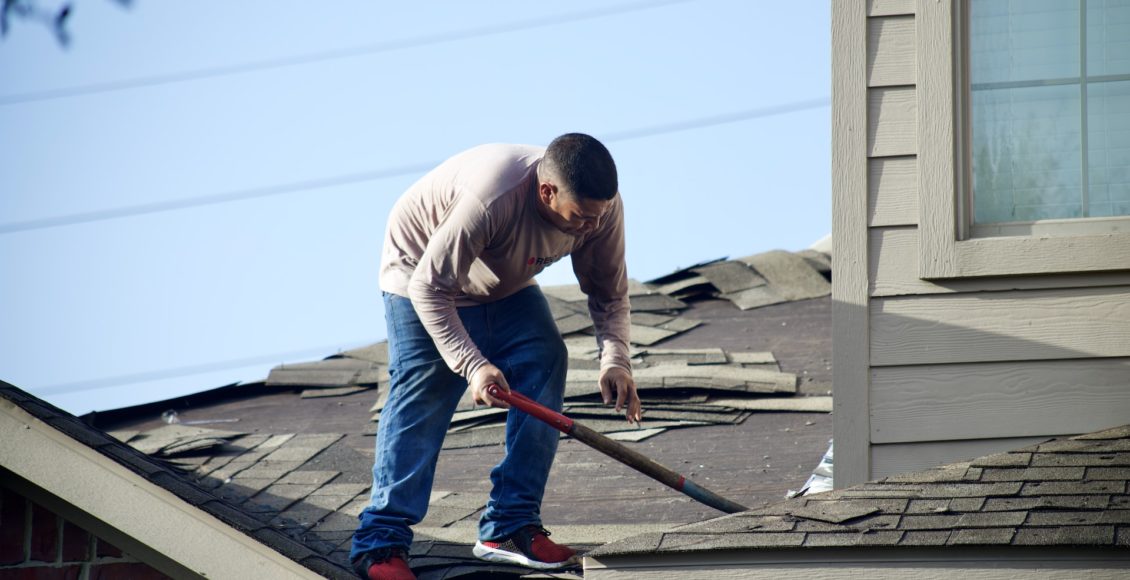Identifying the root cause of roofing problems can be a challenging task. These issues can manifest for various reasons, from normal wear and tear to severe weather conditions or poor construction practices. Even minor roofing problems, such as leaks or broken shingles, can lead to substantial damage if not addressed promptly.
To prevent these issues from escalating, it is crucial to recognize the signs of roofing problems, understand their potential causes, and undertake appropriate remedial actions. This guide aims to provide you with an in-depth understanding of identifying and resolving common roofing problems effectively.
1. Hire a Professional
Hiring a professional roofer is one of the most effective ways to identify and address the root cause of roofing problems accurately. Certified and experienced roofing contractors in CA have the requisite knowledge and skills to diagnose complex roofing issues that may be hidden from untrained eyes. Professionals can conduct a thorough roof inspection, identify potential problem areas, and provide comprehensive solutions that address the current issue and prevent future damage.
Moreover, they are well-versed in safety practices, and their work is often backed by warranties, ensuring that you get the most out of your investment. When choosing a roofing professional, consider their licensing, insurance, experience, and reputation in the market.
2. Regular Inspections
It is essential to inspect your roof regularly for signs of damage. Depending on the material and age of your roof, this could be done as frequently as several times a year or up to every five years. Visual inspection involves checking for signs of sagging or bulging, missing shingles, unusual discoloration, moss, algae growth, loose nails or screws, and water stains. It is also necessary to inspect the interior of your roof for signs of water damage or mold growth. Any damages observed in the inspection should be addressed immediately before they become more costly repairs.
3. Have an Emergency Preparedness Plan
Severe weather conditions such as heavy rain, hailstorms, strong winds, and snow can cause significant damage to your roof. To minimize these risks, it is essential to have an emergency preparedness plan outlining what measures should be taken in such cases. This plan should cover various issues, from ensuring the gutters are clear to installing effective drainage systems on your property.
You can also consider investing in roofing services that offer emergency repairs for extreme weather conditions. This can help protect your roof from further damage and prevent unnecessary expenses in the long run.
4. Check the Attic
The attic is often overlooked for roofing problems, but it can provide critical signs of potential issues. This space can reveal signs of leaks, mold or mildew growth, or even pest infestations that can deteriorate your roof’s structure. Therefore, regular attic inspections are critical in identifying roofing problems early.
When inspecting the attic, pay attention to any dark stains or streaks on the underside of the roof sheathing or the insulation, as these are signs of potential water leaks. Warped or buckling wood, a musty smell, or signs of rodent or insect activity are alarming and require immediate attention. Regular inspection and prompt action can save you from larger, more expensive repairs down the line.
5. Assess the Age of Your Roof
The age of your roof is a significant factor to consider when assessing the root cause of its problems. Depending on the type and quality of materials used, most roofs may last between 10 and 20 years before needing replacement. If your roof is nearing the end of its service life, it may face more frequent issues requiring repairs or a complete replacement.
It is also important to remember that regular maintenance can extend the lifespan of one’s roof significantly. This includes cleaning the gutters and downspouts, trimming back overhanging branches, and examining for signs of damage. A well-maintained roof can give you years of service and protection for your home.
6. Examine the Ventilation
An efficiently functioning ventilation system ensures a balanced airflow, preventing heat and moisture buildup in the attic space. Inadequate ventilation can lead to many issues, such as mold or mildew growth, wood rot, warped shingles, and a shortened roof lifespan due to constant exposure to excessive heat and dampness.
To examine your roof’s ventilation:
- Start by checking for signs of moisture or heat buildup in the attic.
- Look for rusted nails, damp or compressed insulation, and wood decay, as these are clear indicators of condensation from poor ventilation.
- Monitor the temperature in the attic during warm weather. Your ventilation might be insufficient if it is noticeably hotter than the outlined to be increased.
Keeping your roof in shape is essential to maintaining a home safe and secure. Even if you don’t have any significant concerns, it’s still wise to regularly inspect for signs of damage that could lead to costly repairs or replacements or put you at risk in severe weather. Following the tips outlined in this guide, you can quickly identify the root cause of your roofing problems and take the necessary steps to address them quickly and cost-effectively.
Why a Solid Roof is a Wise Investment: Protecting and Enhancing Home Value



Comments are closed.